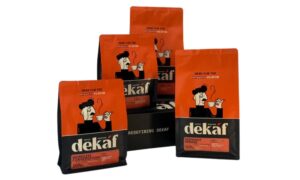Many Gen Z consumers today place a strong emphasis on trusting the brands they support—more so than previous generations. For them, trust goes beyond product quality; it also includes a brand’s ethics, sustainability efforts, and authenticity. A company’s values often matter just as much as what it sells.
This generation, raised in a digitally connected and socially conscious environment, approaches shopping with intentionality. They prioritize brands that align with their personal values, seeking products that not only serve a purpose but also contribute positively to society. This shift challenges traditional marketing strategies, urging brands to focus on transparency, ethical practices, and genuine engagement to resonate with Gen Z consumers.
Piercing Precision: Why Comfort Is Non-Negotiable in Personal Style
Comfort drives Gen Z’s jewelry choices, especially their love for earrings. The growing popularity of hypoallergenic cartilage earrings made from titanium and surgical steel shows a strong preference for comfort and practicality. These materials help avoid irritation and support all-day wear without discomfort. Gen Z looks for pieces that fit easily into their daily lives while still looking good.
Flat-back designs, like those from Cords Club, hit the mark by blending style with everyday ease. These earrings work well with earbuds, don’t get in the way at airports, and remove the hassle from wearing jewelry. Picking items that offer both comfort and style helps build a wardrobe that feels good and looks good every day.
Label-Free Loyalty: Micro-Brands Are Winning Without Logos
Minimalism has a strong pull for Gen Z, who often choose subtle, logo-free pieces over flashy branding. Craftsmanship takes center stage, with details like hidden seams and careful stitching creating a sleek, polished look. Without loud distractions, quality speaks for itself—and shoppers feel their values are being reflected in the pieces they wear.
Rather than chasing fast fashion, Gen Z leans into quality. Items such as balanced outerwear or softly brushed interiors invite touch and feel special. Low-key but well-made pieces support personal style without shouting for attention. Exploring thoughtfully designed brands can help build a wardrobe that truly fits individual taste.
Tactile Impact: How Packaging Improves the Consumer Experience
For Gen Z, packaging is part of the product experience. Unboxing becomes a memorable moment when materials like soft-touch rubber finishes, magnetic closures, and weighted boxes are involved. Even the way a lid slides open can shape how the product is perceived. These subtle details invite interaction and build anticipation.
It’s not just about looks. Using molded pulp trays or foil-stamped boxes signals care for sustainability and adds meaning to the moment. Thoughtful packaging tells a story and creates an emotional layer that sticks. Done right, it offers something real to connect with—before the product is even used.
Spatial Awareness: Compact Living Is Shaping What People Buy
Living in small spaces has changed the way Gen Z shops. They look for items that save space without sacrificing looks. Things like stackable dishes and modular furniture meet this need perfectly. Some even prefer foldable chairs that slide under beds or compact shelves that double as desks. These smart solutions reflect how younger shoppers combine function and style.
Brands like Muji and Tylko stand out by offering products that help create clean, calm spaces. Their designs make it easier to stay organized and keep homes feeling peaceful. Choosing items that do more with less is becoming the norm, especially when space is tight and simplicity is a priority.
Digital Quiet Zones: Why Micro-Escapes Are Gaining Cultural Currency
With constant notifications and screen time, Gen Z is craving quiet moments. That’s why many are turning to stripped-down tech like the Minimalist Phone or Paper. These tools help them stay focused and cut out noise, so they can pay more attention to real life. Some models even limit access to social media or remove it entirely, reducing the urge to scroll during downtime.
Simple habits—like flipping an hourglass or using a diffuser—make a big difference. They add small moments of calm and help with mindfulness. Finding ways to slow down and be present is becoming a top priority, and even the smallest routines can help build that sense of peace.
Gen Z doesn’t just shop—they curate. Each purchase reflects personal values, comfort, and an eye for thoughtful design. What stands out isn’t loud branding or flashy trends, but subtle features that make life easier, calmer, or more expressive. Everyday items, from earrings to stackable shelves, earn loyalty through usefulness and intention. Packaging, materials, and even tech habits are part of the experience. Brands that want to connect need to listen closely and design with care. Surface-level appeal fades fast. The real win lies in creating products that feel like they were made for someone’s actual life—not just their feed.





























